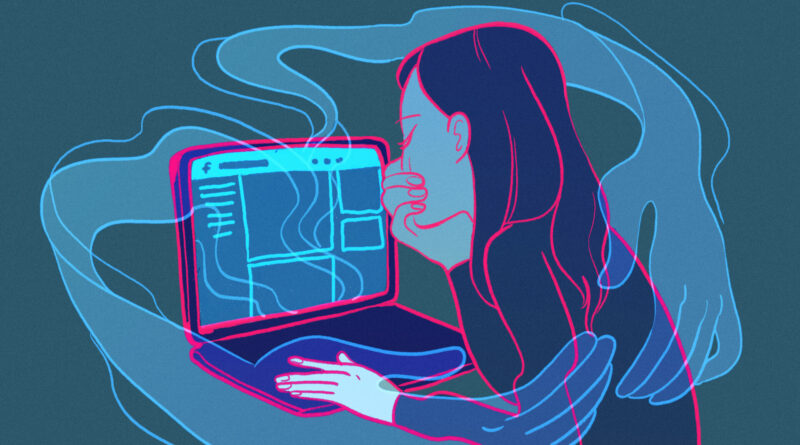More than half of Americans have experienced online harassment, says ADL report
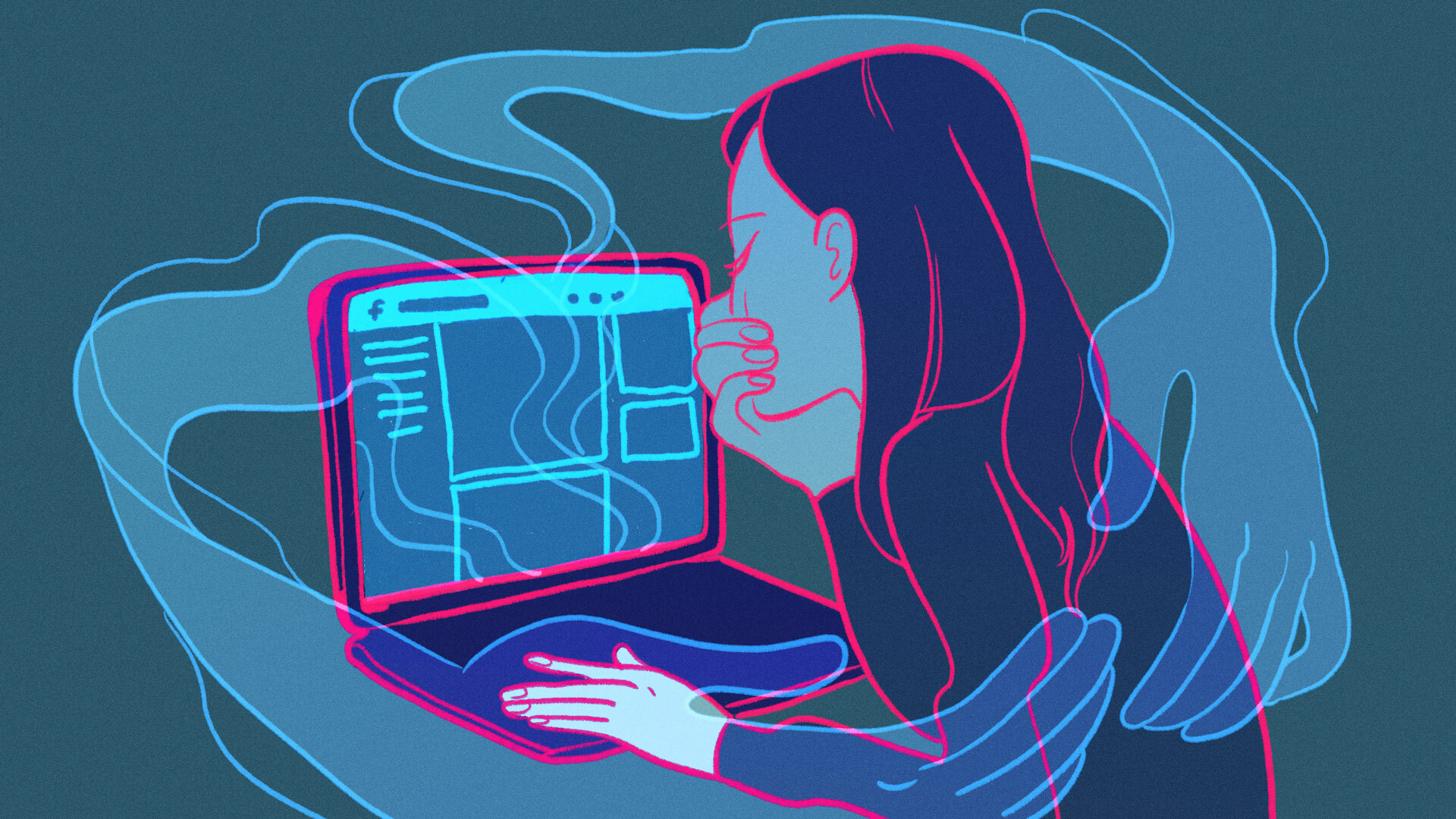
The last year has seen a record-breaking increase of online hate and harassment for many Americans, according to a new report by the Anti-Defamation League (ADL). More than half of American adults and teens have experienced online harassment.
The ADL’s annual “Online Hate and Harassment: The American Experience” report adds a national perspective to claims of a worsening digital environment, the product of a year of waning online protections, discriminatory legislation, and an overall digital environment lacking safeguards for all users.
The findings are based on a national survey of more than 2,000 adult and 500 teenage respondents, all of whom were polled on their online experiences over the last 12 months, in addition to their general experience of digital abuse over their lifetimes. The ADL defines harassment as “unwanted or hostile contact on digital platforms — including social media, chat, and email — such as verbal abuse, hate speech, trolling, spamming, impersonation, and defamation,” with more severe forms in ongoing harassment campaigns, sexual harassment, stalking, doxing, and swatting. Online hate is defined as “abuse and harassment targeting someone for their identity, specifically as part of a marginalized group.”
Online hate and harassment isn’t improving
The survey polled respondents on a variety of abusive online behaviors, including being called offensive names, intentional embarrassment, and forms of severe harassment such as physical threats, prolonged harassment, stalking, sexual harassment, doxing, and swatting.
Overall, almost every single demographic polled reported higher levels of online hate and harassment than in years previous, and the numbers increased for both adults and teens. Both men and women reported sharp increases in severe harassment, as well.
In total, more than half of American adults reported being harassed online in their lifetime — the highest number reported in four years — increasing from 40 percent to 52 percent. A third of adults reported being harassed within the past 12 months, a 10 percent jump from 2022’s numbers.
And 51 percent of teens reported being harassed online in the last year — a steep 15 percent rise over just 12 months — with 47 percent also reporting that online abuse led to in-person harassment.
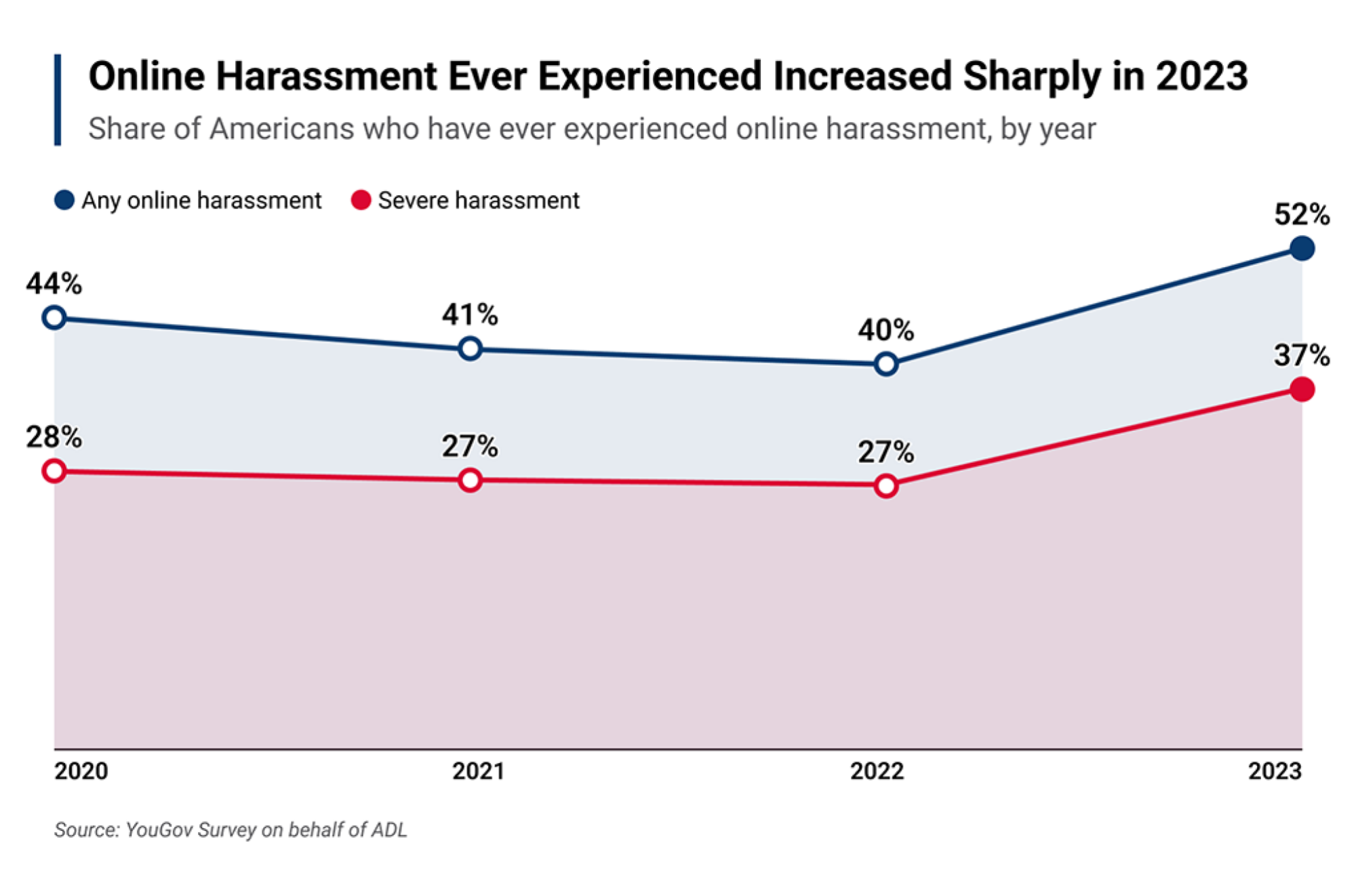
According to the ADL, Facebook remains the highest reported platform where hate and harassment occur, but increases were also noted on Twitter, Reddit, TikTok, and WhatsApp.
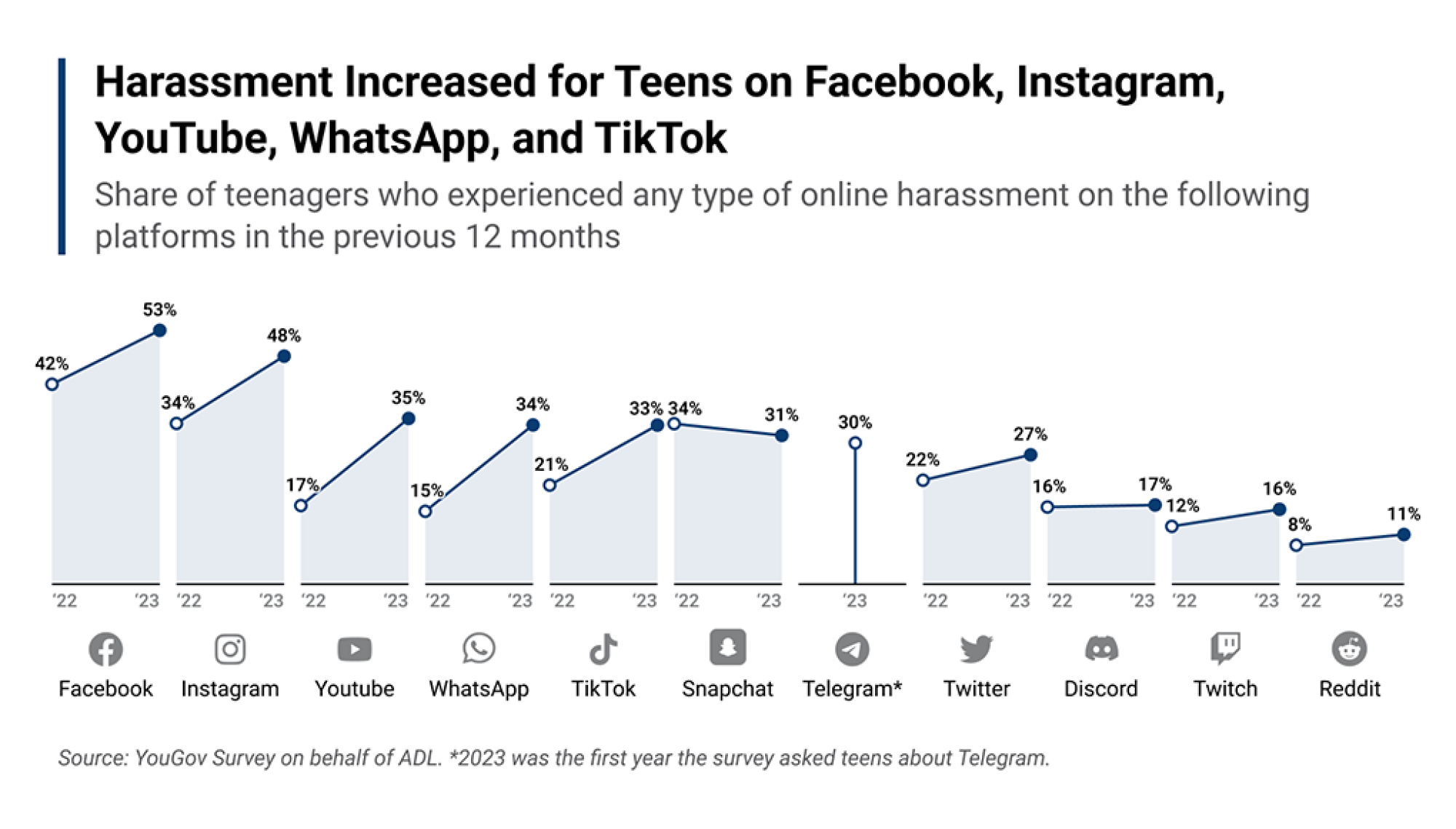
The trans community continues to face high levels of abuse
For the first time, ADL surveyed an additional pool of transgender respondents in order to obtain a more representative sample of the online experience for highly-targeted users. The survey concluded that transgender respondents face the highest levels of online harassment, with 76 percent of respondents reporting that they have been harassed online in their lifetimes, and 51 percent of respondents reporting being harassed in the last year.
The broader LGBTQ community ranks next highest, with 47 percent of those polled reporting instances of harassment in the past 12 months.
“Together, transgender and LGBQ+ people were the most harassed demographic group every year we have conducted this survey,” the organizations writes.
Identity-based hate is still a widespread fear
Marginalized groups reported identity-specific harassment at increased rates compared to the previous year, and nearly every racial and ethnic group polled faced an increase in digital abuse — 38 percent of Black and African American respondents faced online harassment.
Among Jewish respondents, 80 percent reported a fear of being harassed online. According to the report, a rise in antisemitic incidents and highly visible online antisemitic tirades from influential figures and political candidates in 2022 “may account for the increase in Jewish respondents’ worries about online hate and harassment.” The ADL also documented a rise in antisemitism on Twitter, specifically, following Elon Musk’s takeover and the reinstating of accounts that incite harassment.
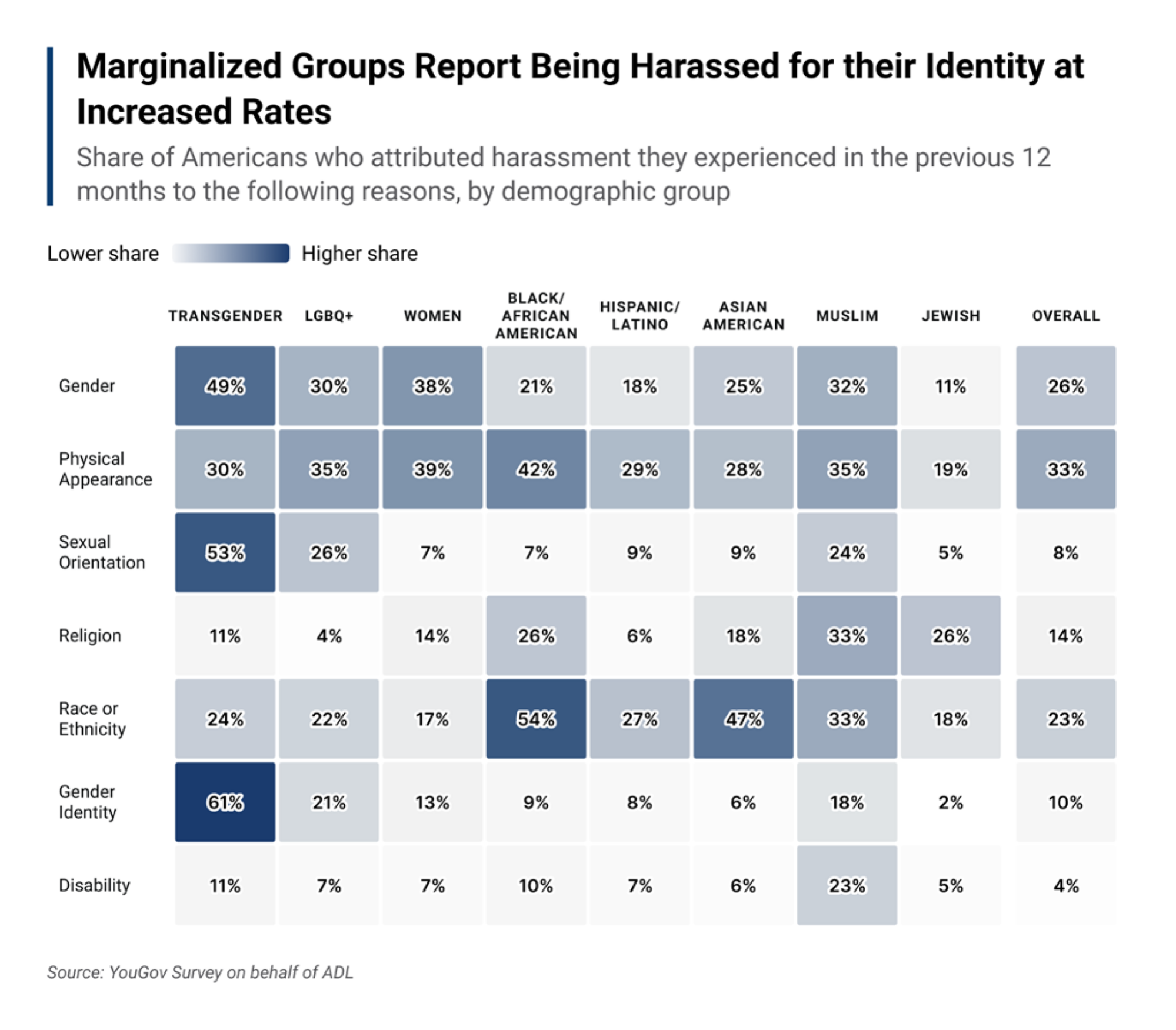
Digital and legislative protections are needed
The ADL also issued several recommendations for social media companies and legislators, which suggest:
-
Enforcing hate and harassment policies transparently, equitably, and at scale on social media platforms, including limiting high-profile user exceptions and other loopholes that make policies less effective.
-
Adopting ADL’s recommended tools and anti-hate by design principles to support targets of harassment.
-
Mandating transparency reporting and outlaw doxing at a federal level, and increasing consumer protection efforts to disincentivize harmful business practices.
“Through initiatives like Backspace Hate, ADL advocates for stronger legislation, enhanced enforcement mechanisms, and increased public awareness to safeguard individuals facing online harassment,” the report states. “ADL actively collaborates with legislators to update cyberharassment laws, particularly concerning doxing and swatting, with the goal of providing greater protection to victims and targets of digital abuse.”
For more Social Good stories in your inbox, sign up for Mashable’s Top Stories newsletter today.
